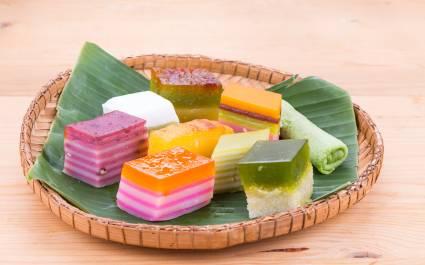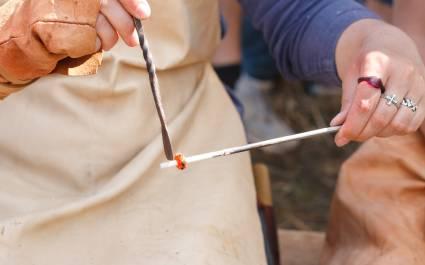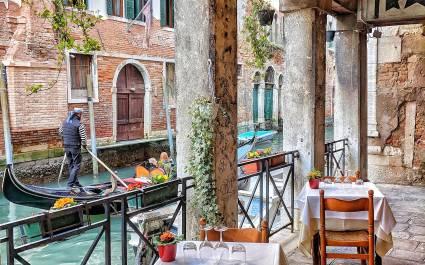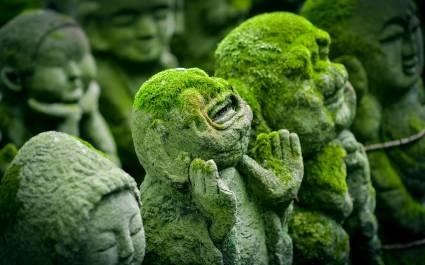A trip to UNESCO travel destinations around the world can be pretty incredible but how about a vacation that lets you experience the heart and soul of a destination through its intangible cultural heritage?
By ‘intangible cultural heritage’ we mean experiences and not just a building or monument. These could be skillset or culinary practice which forms a key part of a nation’s cultural and historic identity. As well as a list of significant landmarks known as the World Heritage sites, UNESCO established the intangible cultural heritage list in 2008 to help safeguard and raise awareness of specific traditions.
Many of the items found on the UNESCO intangible cultural heritage list are under threat of disappearing, making it even more important to recognize and seek them out. From food experiences to ancient local crafts, let’s take a look at some of the most recent additions to the list, all of which could add a whole new layer of excitement to your next journey.
Get to grips with hawker food culture in Singapore

While Singapore may be known for its clean streets and space-age architecture, the city is also home to some of the best street food in Asia. Hawker centers (or street vendors) are found across the city and allow locals and visitors alike to dining together.
You’ll spot over 100 hawker centers in Singapore, including the world-famous Maxwell Road, where you can buy delicious Asian dishes from numerous stalls. The centers are a key part of the region’s urban culture and provide spaces for people to eat, socialize and enjoy entertainment such as chess games and live music.




Discover the art of mechanical watchmaking in Switzerland

Fans of fancy timepieces will know Switzerland has a reputation for creating wonderful watches and clocks. In fact, historically, whole families once learned the skill and passed it down to their children and grandchildren. Some of the best watchmakers in the world are located in this tiny European country, specifically within the Jura Arc: a stunning region in the Alps between Basel and Geneva. The skills used for watchmaking and creating other minute mechanical objects, whether that’s music boxes or sculptures, is another recent entry on the UNESCO Intangible Cultural Heritage list. You can visit the Jura Arc to see the craftsmen at work or head into a watch shop in any Swiss city to admire exquisitely crafted timepieces.




Shop for exquisite glass beads in Italy

Italy’s Murano islands in Venice have long been known for their gorgeous glass beads. Unsurprisingly, the country’s tradition of creating glass beads joins a host of other UNESCO Intangible Cultural Heritage experiences from Italy. Crafting glass beads is an ancient practice in Italy that’s been passed down for generations; once upon a time, they were even used as a form of currency! While Murano is the best place to see and purchase these beautiful multi-colored beads, you’ll also find glass factories and artisan shops across the Veneto region.




View ancient restored wooden structures in Japan

As a country that’s blanketed in forest, it’s no surprise that so many of Japan’s spectacular buildings are made out of wood. A new listing for 2020 on the UNESCO Intangible Cultural Heritage list was the country’s traditional workmanship and careful preservation of its wooden architecture. You’ll be able to see some of these skills put into action at locations across the country, including the 1200-year-old Horyu-Ji temple (itself a UNESCO travel destination) outside Osaka, and the Tsuen Tea house in Kyoto.




Enjoy a therapeutic sauna session in Finland

Many countries in Europe are well-known for their sauna culture. Nevertheless, it’s Finland’s historical links to the practice which ultimately landed it UNESCO status. According to UNESCO, the country is home to more than three million saunas, with many families passing down their sauna practices and routines across multiple generations. While many locals have their own private saunas, Finland’s cities and towns also feature numerous well-kept public saunas which are easily accessible to visitors. Embrace the peaceful and relaxing experience by booking a session when on vacation in this beautiful Nordic nation.
Venture to Colombia to admire handicrafts made from mopa-mopa
Video Credit: UNESCOIn addition to being the home of one of our top UNESCO World Heritage sites for 2019, Colombia also hosts one of the new items from the list of Intangible Cultural Heritage. The recognized practice takes place in the leafy Putumayo and Narino Departments where small groups of craftsmen harvest, process, and craft mopa-mopa resin into beautiful works of art. The mopa-mopa is melted down before being dyed and stretched to create wonderful decorations. The threatened cultural practice is one of the few remaining aboriginal crafts still observed in Colombia and a wonderful thing to witness if you’re headed for an adventure in the Amazon.
Watch a budima dance performance in rural Zambia
Video Credit: UNESCOIf you’re yet to tick off going on safari, Zambia is a wonderful destination for it! What’s more, it’s one of the latest UNESCO travel destinations to be added to the Intangible Cultural Heritage list thanks to the budima dance. This style of dancing is particularly prevalent among the Wee People who live along the Zambezi. Usually performed at special occasions – weddings, funerals, or harvest festivals – this is an energetic dance where women dress in colorful beaded costumes and men carry spears.
Want to add culturally significant activities to your next journey? Talk to our UNESCO specialists about the best ways to witness and help preserve some of these wonderful cultural heritage experiences.

